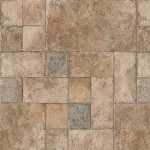Vinyl Plank Flooring for Concrete Basements: A Comprehensive Guide
Vinyl plank flooring has emerged as a popular choice for basement installations, offering numerous advantages over traditional flooring options. Its durability, moisture resistance, and ease of installation make it a suitable solution for damp and often-trafficked basement environments.
Understanding Vinyl Plank Flooring
Vinyl plank flooring is a type of flooring that resembles the appearance of hardwood planks. It is constructed with a core layer topped with a decorative layer that mimics the texture and color of natural wood. Vinyl is a highly resilient and durable material, making it resistant to wear and tear.
Benefits of Vinyl Plank Flooring for Basements
Vinyl plank flooring offers several benefits for basement flooring applications:
- Moisture Resistance: Vinyl is naturally waterproof, making it an excellent option for basements prone to moisture and humidity.
- Durability: Vinyl is highly durable and can withstand heavy foot traffic and impacts, making it ideal for busy basements.
- Easy Installation: Vinyl planks are relatively easy to install using a click-and-lock system or adhesive, allowing for DIY installations or professional installation.
- Variety: Vinyl planks come in a wide range of styles and colors, allowing you to customize your basement flooring to your liking.
- Cost-Effective: Vinyl plank flooring is more affordable than many other flooring options, making it a budget-friendly choice.
Choosing the Right Vinyl Plank Flooring
When choosing vinyl plank flooring for your basement, consider the following factors:
- Thickness: Choose a vinyl plank with a thickness of at least 6mm to ensure durability.
- Wear Layer: The wear layer is the protective layer that resists scratches and wear. Opt for a wear layer of 12mil or higher.
- Underlayment: An underlayment helps absorb sound and moisture. Choose an underlayment specifically designed for basement installations.
Installation Process
Installing vinyl plank flooring over concrete in a basement involves the following steps:
- Prepare the Subfloor: Ensure the concrete subfloor is clean, level, and free of moisture.
- Install Underlayment: Roll out the underlayment over the concrete subfloor.
- Install Vinyl Planks: Start at one corner of the basement and click the vinyl planks together using the click-and-lock system or adhesive.
- Trim and Finish: Trim the excess vinyl planks around the edges and install baseboards to complete the installation.
By following these guidelines, you can enjoy a durable, moisture-resistant, and stylish vinyl plank flooring that enhances the functionality and aesthetics of your basement.

Vinyl Plank Flooring Installation Basement Remodel Before And After

Best How To Install Vinyl Plank Flooring Four Generations One Roof

Tips For Installing Vinyl Plank Over Concrete Floors Lemon Thistle

Vinyl Plank Flooring Installation Basement Remodel Before And After

What Is The Best Flooring For Basements Get Pros And Cons

What Are The Best Flooring For Basement In Homes

The Best Flooring Options For Your Basement America

Vinyl Plank Flooring Installation Basement Remodel Before And After

New Basement Flooring Shades Of Blue Interiors

Best How To Install Vinyl Plank Flooring Four Generations One Roof








